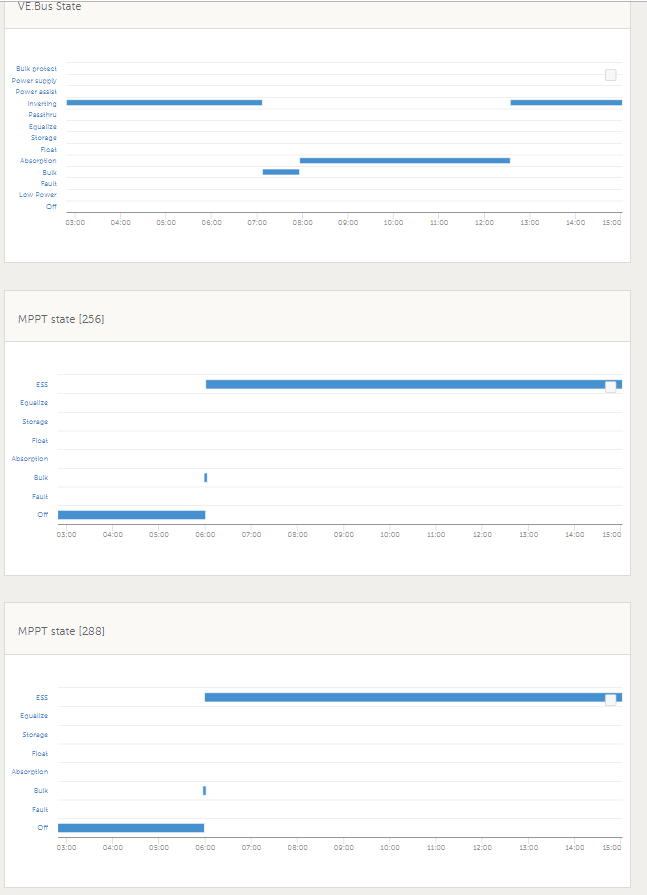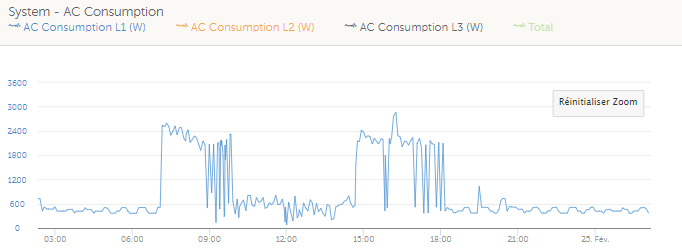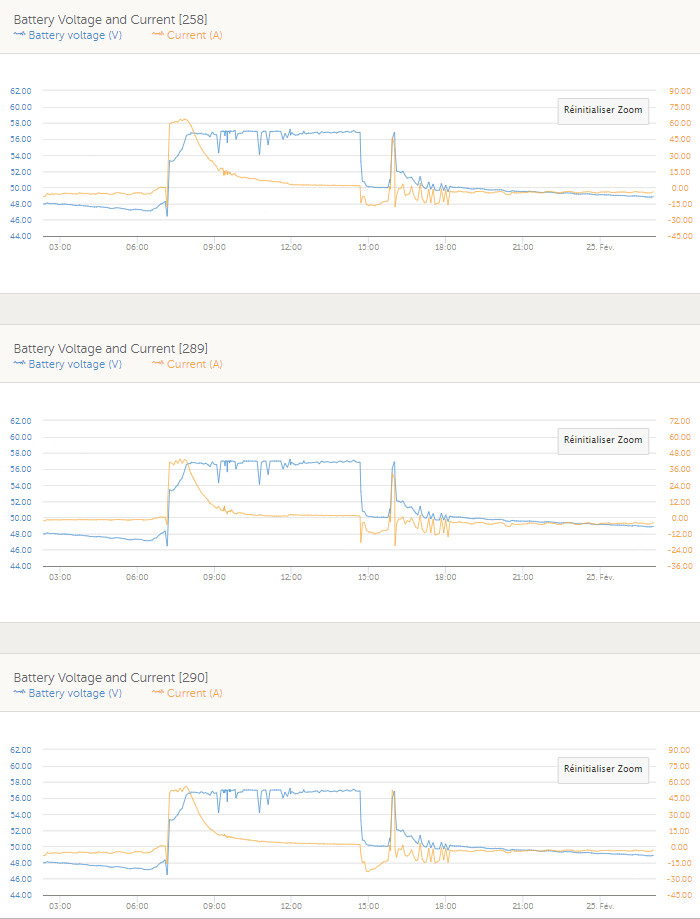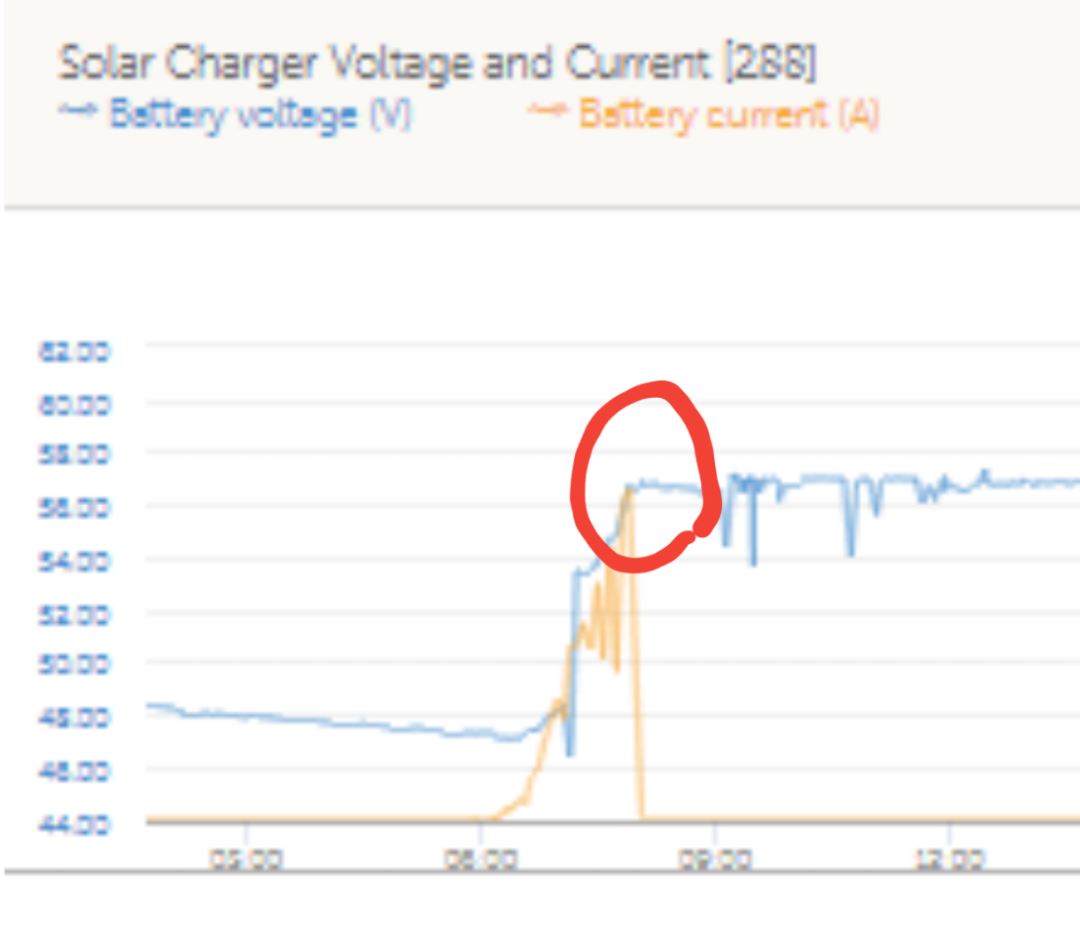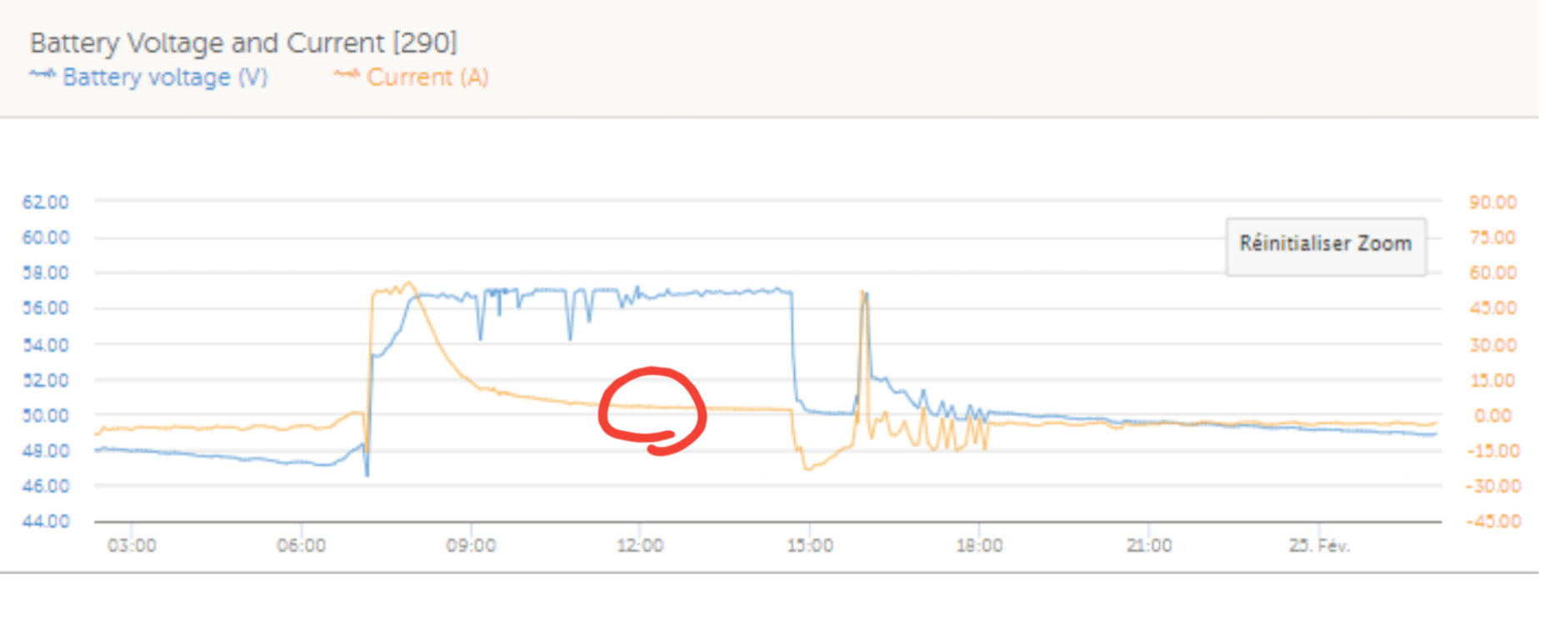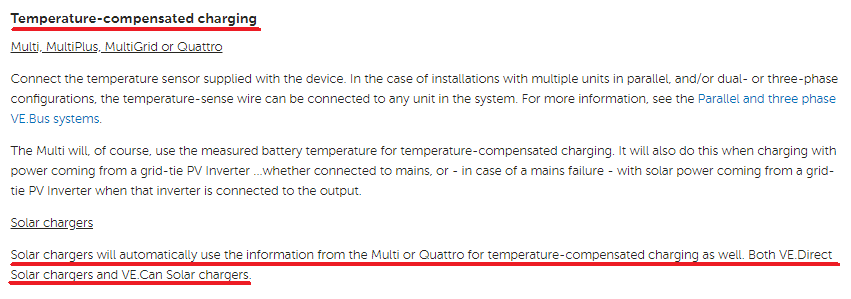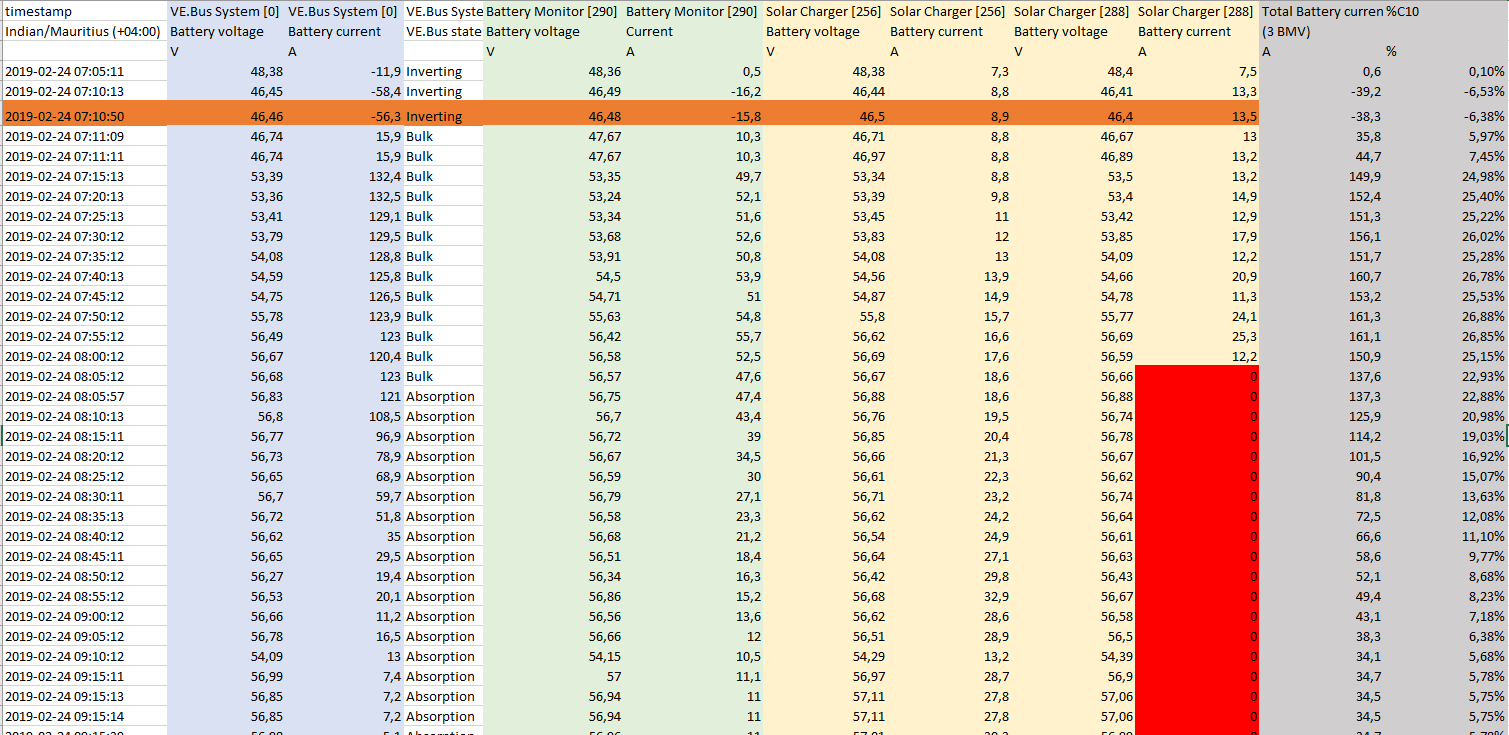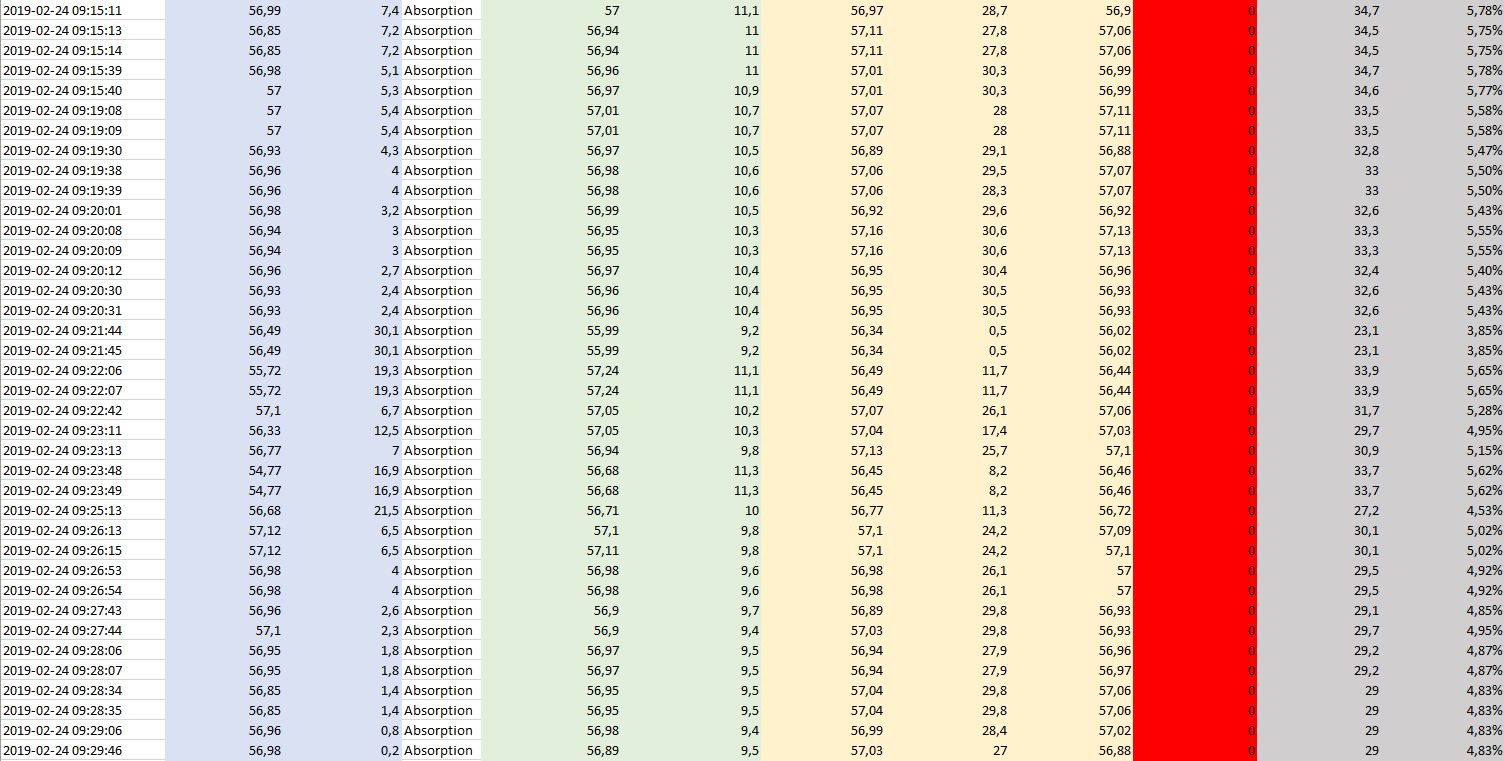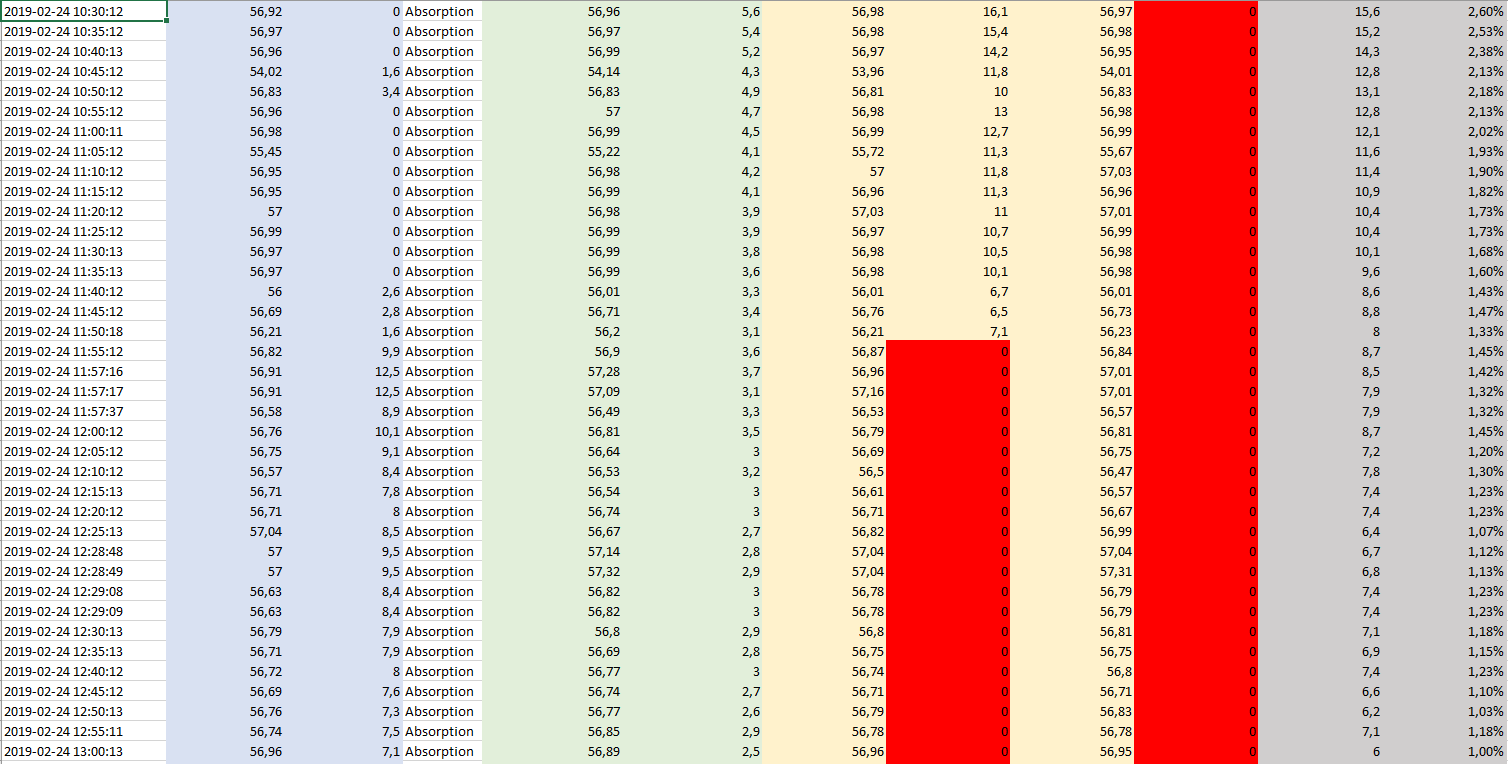Hi,
On one of our client's site, we have a problem that we cannot solve:
It is composed with:
- A 15kVA Generator
- 600 Ah battery bank mounted in 48Vdc system
- 2 synchronised Quattro 48/5000/70
- 2 SmartSolar 250/100
- 3 BMV
- 1 CCGX
Configuration:
- Absorption voltage: 57.6Vdc on both Quattro & SmartSolar
- Floating voltage: 55.2 Vdc on both Quattro & SmartSolar
- Temperature compensation: -120mV/°C on SmartSolar
- A couples of Generator Start conditions (temperature, voltage, SoC, overload, etc...)
Please find below a synoptic of this system, and take note that one of the SmartSolar is connected to the CCGX with Ve.direct/USB adaptator while the other one has direct Ve.direct connection:
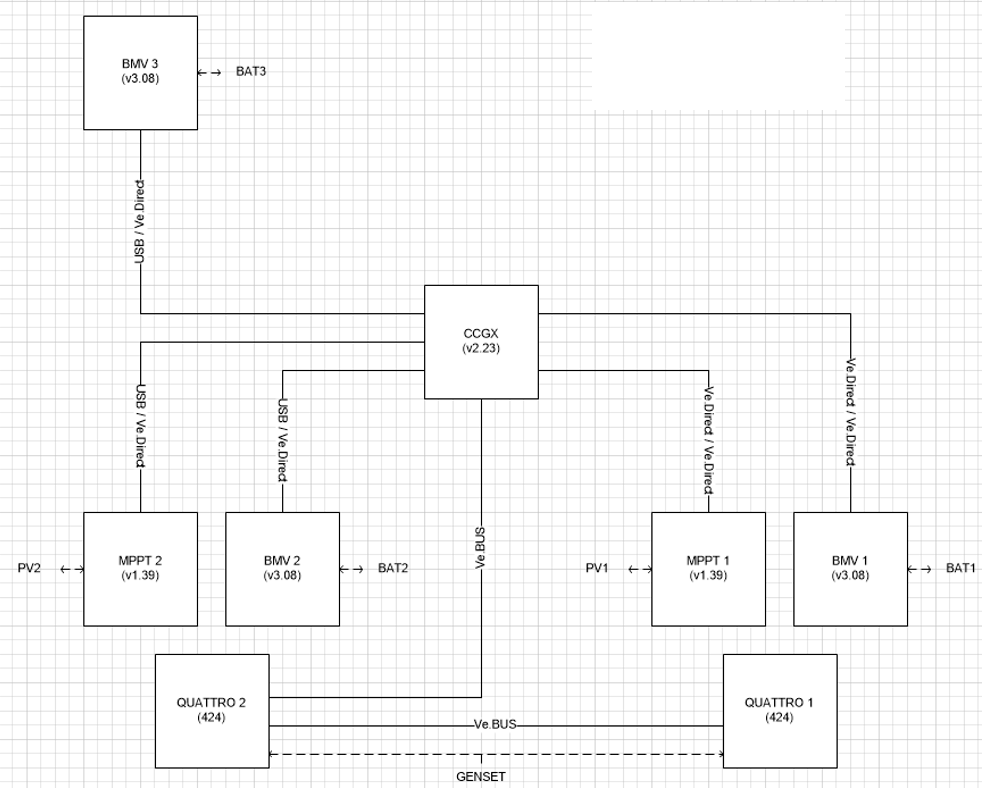
We found out when the generator is ON, and after reaching a certain voltage, below the absorption voltage (for example 56.4Vdc), the solar stops producing.
At first, and because I didn't know yet about the DVCC feature, I tried the old way to prioritize the solar by adding a sligthly different voltage on the SmartSolar (+0.2Vdc => 57.8Vdc @ 25°C instead of 57.6Vdc). It worked pretty fine on the tests bench (1 x Quattro + 1 x SmartSolar) but unfortunately didn't work on the client's site (2 x Quattro + 2 x SmartSolar).
Then, I set-up the DVCC, making sure all the software version were fine, tested it in my office => all good. But then, again, same behaviour in our client's site, the solar is not prioritize (needless to say, the client is not happy).
Finally, I set-up a mixed solution, DVCC and +0.2Vdc on the SmartSolar, it worked a bit better but not enough for the client.
Below, a screenshot of the VRM of yesterday's recharged: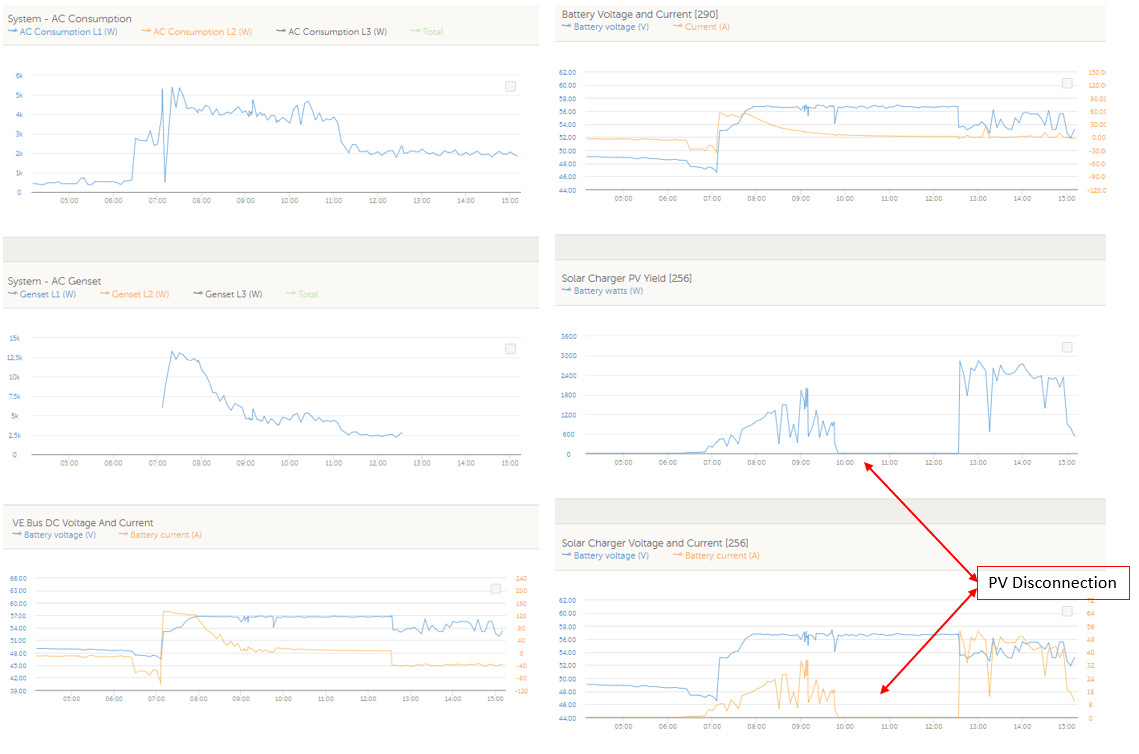
We can see that the SmartSolar [289] gets off after a little while, the 2nd SmartSolar took off an hour before.
So my questions:
- Do you have any idea of what's going on ?
- Has DVCC feature been tested with a couples of Quattros and SmartSolar ?
- Does DVCC work with a SmartSolar connected with Ve.direct/USB while the other one is connected straight on Ve.direct ? Not sure the software can easely do such a thing.
- On Victron Connect App, the voltage parameters are given for 25°C or 20°C ?
- Do you think a Smart Battery Sense will fix the problem ? I readed a lot about it (https://community.victronenergy.com/questions/258/dvcc-battery-temperature-sensor.html)
- Can you confirm me the temperature compensation parameters in a MultiPlus/ Quattro is -5mV/°C or less ?
- Last, why Victron choose as a default settings to prioritize the AC power over the Solar ?
Thank you a lot in advance.
Best Regards

